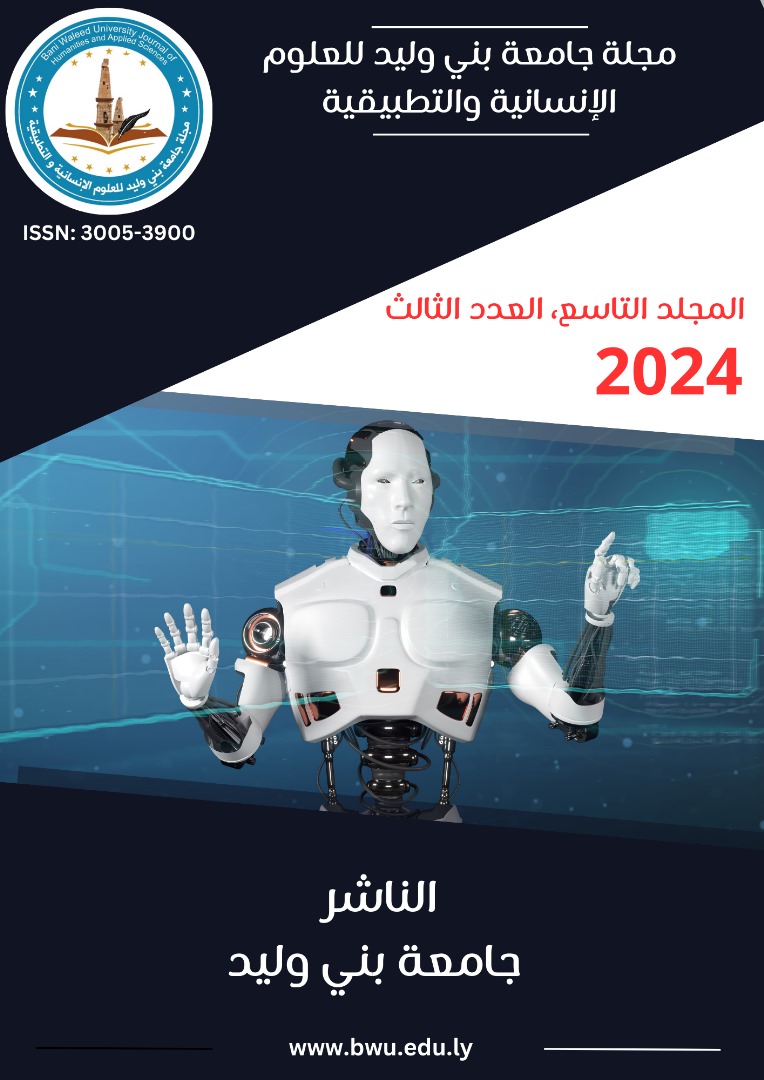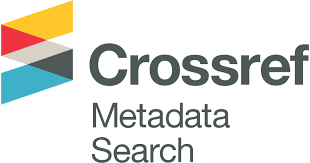Numerical simulation for electrical conductivity of organic- inorganic hybrid compounds by artificial intelligence-based models
DOI:
https://doi.org/10.58916/jhas.v9i3.450Keywords:
Artificial Neural Network (ANN), Artificial-intelligence, Decision tree, Electrical conductivity, Modelling, Organic-inorganic compounds.Abstract
In this work, artificial intelligence-based approaches were applied to predict the electrical conductivity for organic-inorganic hybrid compounds, namely tritetrapropylammoniumdodeca chlorobismuthate(III) [(C3H7)4N]3Bi3Cl12 and bis (4-acetylaniline) tetrachlorocadmate [C8H10NO]2[CdCl4] with only the knowledge of the system temperature and frequency. The suggested machine learning methods are trained, tested, and validated using experimental datasets. These datasets were used as inputs to different machine learning algorithms; these implemented algorithms are artificial neural network-scaled conjugate gradient (ANN-SCG), artificial neural network-gradient descent (ANN-GD), and decision tree. In particular, all ANN models were optimised by adjusting the hyperparameters in order to produce a superior neural network architecture, which provides the lowest value of the gradient error. Upon comparison, it was found that all ANN models showed better accuracy and significant precision in demonstrating nonlinear relationships with the electrical conductivity dataset, leading to a better prediction of the simulated electrical conductivity with more than 99% accuracy for the presented data sets. The decision tree model could not predict the electrical conductivity with acceptable accuracy in terms of high RMSEs and low correlation coefficients. Based on the obtained results, it suggested that ANNs were quite efficient techniques for predicting nonlinear and complicated correlations between independent variables and the response parameter.
Downloads
References
Li, X., Pan, F., Sun, C., Zhang, M., Wang, Z., Du, J., Wang, J., Xiao, M., Xue, L., Zhang, Z.G. and Zhang, C., 2019. Simplified synthetic routes for low cost and high photovoltaic performance n-type organic semiconductor acceptors. Nature communications, 10(1), p.519.
Yamamura, A., Watanabe, S., Uno, M., Mitani, M., Mitsui, C., Tsurumi, J., Isahaya, N., Kanaoka, Y., Okamoto, T. and Takeya, J., 2018. Wafer-scale, layer-controlled organic single crystals for high-speed circuit operation. Science advances, 4(2), p.eaao5758.
Wang, Q., Qian, J., Li, Y., Zhang, Y., He, D., Jiang, S., Wang, Y., Wang, X., Pan, L., Wang, J. and Wang, X., 2016. 2D single‐crystalline molecular semiconductors with precise layer definition achieved by floating‐coffee‐ring‐driven assembly. Advanced Functional Materials, 26(19), pp.3191-3198.
Park, S.H.K., Ryu, M., Hwang, C.S., Yang, S., Byun, C., Lee, J.I., Shin, J., Yoon, S.M., Chu, H.Y., Cho, K.I. and Lee, K., 2008, May. 42.3: Transparent ZnO thin film transistor for the application of high aperture ratio bottom emission AM‐OLED display. In SID Symposium Digest of Technical Papers (Vol. 39, No. 1, pp. 629-632). Oxford, UK: Blackwell Publishing Ltd.
Geffroy, B., Le Roy, P. and Prat, C., 2006. Organic light‐emitting diode (OLED) technology: materials, devices and display technologies. Polymer international, 55(6), pp.572-582.
Chow, P.C. and Someya, T., 2020. Organic photodetectors for next‐generation wearable electronics. Advanced Materials, 32(15), p.1902045.
Muccini, M., 2006. A bright future for organic field-effect transistors. Nature materials, 5(8), pp.605-613.
Sirringhaus, H., 2014. 25th anniversary article: organic field‐effect transistors: the path beyond amorphous silicon. Advanced materials, 26(9), pp.1319-1335.
Yang, J., Yan, D. and Jones, T.S., 2015. Molecular template growth and its applications in organic electronics and optoelectronics. Chemical reviews, 115(11), pp.5570-5603.
Khan, J., Ahmad, R.T.M., Tan, J., Zhang, R., Khan, U. and Liu, B., 2023. Recent advances in 2D organic− inorganic heterostructures for electronics and optoelectronics. SmartMat, 4(2), p.e1156.
Jariwala, D., Howell, S.L., Chen, K.S., Kang, J., Sangwan, V.K., Filippone, S.A., Turrisi, R., Marks, T.J., Lauhon, L.J. and Hersam, M.C., 2016. Hybrid, gate-tunable, van der Waals p–n heterojunctions from pentacene and MoS2. Nano letters, 16(1), pp.497-503.
Huang, F., Li, J.Z., Xu, Z.H., Liu, Y., Luo, R.P., Zhang, S.W., Nie, P.B., Lv, Y.F., Zhao, S.X., Su, W.T. and Li, W.D., 2019. A bilayer 2D-WS2/organic-based heterojunction for high-performance photodetectors. Nanomaterials, 9(9), p.1312.
Sun, M., Yang, P., Xie, D., Sun, Y., Xu, J., Ren, T. and Zhang, Y., 2019. Self‐Powered MoS2–PDPP3T heterotransistor‐based broadband photodetectors. Advanced Electronic Materials, 5(2), p.1800580.
Pepels, M., Filot, I., Klumperman, B. and Goossens, H., 2013. Self-healing systems based on disulfide–thiol exchange reactions. Polymer Chemistry, 4(18), pp.4955-4965.7
Feng, S., Tan, J., Zhao, S., Zhang, S., Khan, U., Tang, L., Zou, X., Lin, J., Cheng, H.M. and Liu, B., 2020. Synthesis of ultrahigh‐quality monolayer molybdenum disulfide through in situ defect healing with thiol molecules. Small, 16(35), p.2003357.
Stylianakis, M.M., Konios, D., Petridis, C., Kakavelakis, G., Stratakis, E. and Kymakis, E., 2017. Ternary solution-processed organic solar cells incorporating 2D materials. 2D Materials, 4(4), p.042005.
Ricciardulli, A.G. and Blom, P.W., 2020. Solution‐processable 2D materials applied in light‐emitting diodes and solar cells. Advanced Materials Technologies, 5(8), p.1900972.
Zhang, L., Sharma, A., Zhu, Y., Zhang, Y., Wang, B., Dong, M., Nguyen, H.T., Wang, Z., Wen, B., Cao, Y. and Liu, B., 2018. Efficient and layer‐dependent exciton pumping across atomically thin organic–inorganic type‐I heterostructures. Advanced Materials, 30(40), p.1803986.
Futscher, M.H., Schultz, T., Frisch, J., Ralaiarisoa, M., Metwalli, E., Nardi, M.V., Müller-Buschbaum, P. and Koch, N., 2018. Electronic properties of hybrid organic/inorganic semiconductor pn-junctions. Journal of Physics: Condensed Matter, 31(6), p.064002.
Presolski, S., Wang, L., Loo, A.H., Ambrosi, A., Lazar, P., Ranc, V., Otyepka, M., Zboril, R., Tomanec, O., Ugolotti, J. and Sofer, Z., 2017. Functional nanosheet synthons by covalent modification of transition-metal dichalcogenides. Chemistry of Materials, 29(5), pp.2066-2073.
Niu, L., Li, K., Zhen, H., Chui, Y.S., Zhang, W., Yan, F. and Zheng, Z., 2014. Salt-assisted high-throughput synthesis of single-and few-layer transition metal dichalcogenides and their application in organic solar cells. Small (Weinheim an der Bergstrasse, Germany), 10(22), pp.4651-4657.
Ling, H., Koutsouras, D.A., Kazemzadeh, S., Van De Burgt, Y., Yan, F. and Gkoupidenis, P., 2020. Electrolyte-gated transistors for synaptic electronics, neuromorphic computing, and adaptable biointerfacing. Applied Physics Reviews, 7(1).
Okutan, M., Basaran, E., Bakan, H.I. and Yakuphanoglu, F., 2005. AC conductivity and dielectric properties of Co-doped TiO2. Physica B: Condensed Matter, 364(1-4), pp.300-305.
Gago, J., Martínez-Núñez, L., Landín, M. and Gallego, P.P., 2010. Artificial neural networks as an alternative to the traditional statistical methodology in plant research. Journal of plant physiology, 167(1), pp.23-27.
Landín, M., Rowe, R.C. and York, P., 2009. Advantages of neurofuzzy logic against conventional experimental design and statistical analysis in studying and developing direct compression formulations. European Journal of Pharmaceutical Sciences, 38(4), pp.325-331.
Suzuki, K. ed., 2011. Artificial neural networks: methodological advances and biomedical applications. BoD–Books on Demand.
Colbourn, E., 2003. Neural Computing Enables Intelligent Formulations. Pharmaceutical Technology, 18, pp.16-21.
Colbourn, E. and Rowe, R.C., 2005. Neural computing and pharmaceutical formulation. Encyclopaedia of pharmaceutical technology.
Kalantary, S., Jahani, A. and Jahani, R., 2020. MLR and Ann approaches for prediction of synthetic/natural nanofibers diameter in the environmental and medical applications. Scientific reports, 10(1), p.8117.
Trigui, W., Oueslati, A., Chaabane, I. and Hlel, F., 2014. Synthesis, crystal structure, dielectric properties, and AC conductivity of tri-tetrapropylammonium dodeca chlorobismuthate (III). Ionics, 20, pp.231-241.
Jellibi, A., Chaabane, I. and Guidara, K., 2016. Experimental and theoretical study of AC electrical conduction mechanisms of Organic–inorganic hybrid compound Bis (4-acetylanilinium) tetrachlorocadmiate (II). Physica E: Low-dimensional Systems and Nanostructures, 80, pp.155-162.
Li, J., 2008. Computational analysis of nanofluid flow in microchannels with applications to micro-heat sinks and bio-MEMS.
Quinlan, J.R., 1987. Simplifying decision trees. International journal of man-machine studies, 27(3), pp.221-234.
Breslow, L.A. and Aha, D.W., 1997. Simplifying decision trees: A survey. Knowledge engineering review, 12(1), pp.1-40.
Quinlan, J.R., 1999. Simplifying decision trees. International Journal of Human-Computer Studies, 51(2), pp.497-510.
Helaleh, A.H. and Alizadeh, M., 2016. Performance prediction model of miscible surfactant-CO2 displacement in porous media using support vector machine regression with parameters selected by ant colony optimization. Journal of Natural Gas Science and Engineering, 30, pp.388-404.
Otchere, D.A. ed., 2024. Data Science and Machine Learning Applications in Subsurface Engineering. CRC Press, Taylor & Francis Group.















